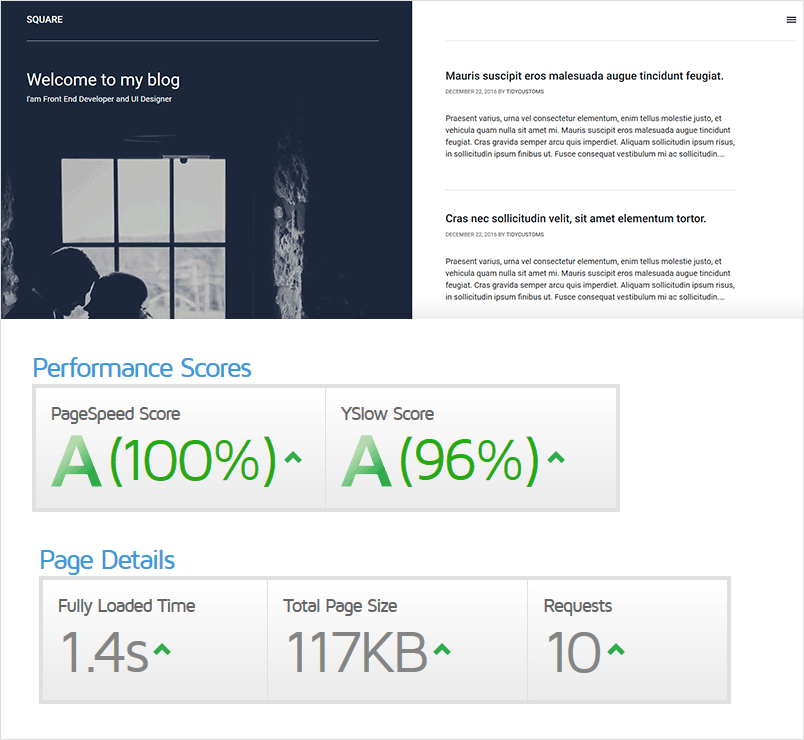Some time ago a couple of web developers and designers hit upon a concern; they realized that many people don’t want to invest a huge amount of time or resources into their website; they want to be able to build the core site up quickly, then let it run with the occasional update. Think about the average small company website; usually its main purpose is to cover the core needs of a customer, such as maps, contact details etc…Or what about personal blogs? Sure, some can grow and become hugely popular, but most of the time when someone has a blog they just want something simple they can update now and then without worrying about constant updates, hacker attacks or other day-to-day maintenance. They realized that a new, more beginner-friendly way to build websites was needed.
The funny thing is, the solution to these gripes was already available; in fact, it’s even older than every CMS out there! That answer, is static websites.
These guys knew that static websites could be a great resource for many people, but the tools on offer left a lot to be desired, especially for beginners. They were left with a choice; wait around to see if someone comes up with a solution, or get out there and make one themselves! Thankfully, they chose the latter, and after many months of development and testing we’re able to see the fruits of their efforts; Publii, the Desktop Static Website CMS.

Downloading Publii
Before we jump in and discuss what Publii brings to the table and why we’re excited about what it can do, we encourage you to head on over to the Official Publii Website, where you can sign-up to stay informed of the latest development news, download the beta for Windows and Mac, and provide feedback about any bugs you run into while testing, or any improvements or new features you’d like to see in the future. Publii is completely open-source, so the contributions and feedback you have to offer will be invaluable to the Publii team in making the app even more user-friendly in the future.
Why was Publii made?
There’s an important question to ask at the start of any website project: “What’s the best platform for my needs?”. You need something that provides just the right amount of features without overburdening your resources, and with so many different CMSs on the market, it would seem that we’re spoiled for choice; WordPress, Joomla!, Drupal; each of these can meet different needs for many different website scales. But are they the best solution for everyone?
A long time ago, when dinosaurs roamed the earth and a 56k modem was the pinnacle of your internet access options, all websites were static; that is, they were just plain old HTML with a few little bits of no-thrills CSS to give it some style. It’s not that more complex websites weren’t possible, just that there wasn’t any particular incentive to go bigger; most visitors wouldn’t be running the hardware or have the internet access speed to take advantage of more features. As time went on, the number of people with high-speed internet access exploded, and new, powerful programming languages sprang up to expand the number of features a website could put to use.
Jump forward to the present day, and websites are more complex than ever, with PHP, HTML, Javascript, CSS and sometimes even more all jockeying for position, providing a multitude of features. For the most part these features are absolutely a positive thing, allowing for more interesting user experiences, but they require an awful lot of work to maintain, which just isn’t feasible for someone looking to run a blog for fun or have a simple company website to help customers get in touch.
For these users, a static website is the perfect solution, but wouldn’t you know it, there’s another problem! Static websites were all the rage in the fledgeling years of the net, which makes them a bit of challenge to create. You either have to manually write the code, or use special conversion tools to change your dynamic site to static, though these tools are rarely easy to use and require a lot more advanced knowledge that the average person will have. When the Publii team set about designing their app, it was designed and built to give everybody, regardless of their skill level, the ability to create impressive, fast and secure static websites with minimal fuss.
How does it work?
On the surface, Publii works just like any other CMS; you can create posts, menus and tags (categories) all through a user-friendly interface that’s easy to understand. Multiple options are available for customizing your website layout, styling and functionality, and you can even swap themes to completely change the look of your site. Like WordPress and Joomla!, when writing posts you have access to a full-featured editor that’s packed with options for diversifying your content. You can upload pictures, embed videos; the fundamental experience is the same as using any other simple CMS.
Of course, if Publii was just another standard CMS it wouldn’t be very interesting! There’s a lot of things that make Publii unique, but there are two features in particular that really changes things up:
Websites made with Publii are static, which makes them faster and safer
When a CMS like WordPress or Joomla! is used to make a website, they include a multitude of additional features and functionalities. On the one hand this is great; more flexibility means more ways to customize your site and make it unique. However, this is both a blessing and a curse. You see, in order to offer these extra features there needs to be a lot of additional code running in the background; PHP, Javascript et al, which can take up a lot of resources. Not to mention that all the content you see on a CMS-based site is stored in a database which much be accessed and the data retrieved before the generated page can be sent.
These elements add a lot of extra cycles to the overall load speed of the site; this isn’t a problem for larger websites or companies, but for smaller, individual ventures there’s often simply not enough money to invest in the necessary servers and optimization to keep things running silky-smooth.

The second issue that smaller sites can run into concerns regarding security; the massive growth in CMS use in the past few years unfortunately has seen an increase in hacker attacks directed at them. Thankfully, the communities around the big CMSs such as Joomla! and WordPress means that any potential weakpoints are quickly patched, but even with regular fixes it can be hard for smaller companies or blogs without a dedicated team running the website to stay on top of updates without spending a lot of time and/or money.
However, both of these issues are mitigated by Publii; sites created by this CMS are static, which means that all the files for the site are pre-generated before being uploaded to the server. So unlike a standard CMS, Publii doesn’t use a database or complex PHP or Javascript code, instead using just pure HTML and CSS. It makes sites built using it extremely fast to load. On the security side of things, since all the files are pre-generated and no code is run on the server, Publii-based websites are extremely secure; in fact, pretty much the only way a hacker could get access to your site is if they have your credentials for your host; no need to worry about updates, just sync your generated files and you’re good to go!
Publii is a desktop app, not a server-side CMS
That’s right; Publii doesn’t need to be uploaded to your server, since everything is run directly on your desktop. You don’t even need to be connected to the internet to create or update your site!
With a regular CMS there’s a ton of complex operations that need to be run from the moment you direct your browser to the site, from requesting data from the database, generating pages, executing code and more. That’s why the CMS must be on your server; without it the page content can’t be generated and users can’t see your site.
Publii doesn’t need to be on the server though; it pre-generates all the static files browsers will need to display the website content. Instead, Publii is installed on your local machine, where you can create, modify and manage your site. Once you’re satisfied, you need only insert FTP details for your server into the Publii administrator area. From that point on, you can click on the Sync your website
There’s no limit to the amount of times you can sync, and each time you do Publii will make sure to only upload changed files, leaving unchanged ones intact. This means that you can constantly update your site on your local computer, adding new posts to your blog, for example, then once you’re back online just click the Sync button to have all your changes uploaded to your site!
A flurry of features
These two features are important and provide the biggest differences when comparing Publii to a traditional CMS, but it doesn’t stop there. Create an author page, add social media share buttons to your posts, modify colors and layouts or tweak many other customization options. What’s more, there’s no limit to the amount of websites you can manage via Publii; each can be clearly defined in the backend with its own icon and settings so you can manage your company profile one moment and switch to your personal blog the next.
And of course, the mobile and tablet market is not ignored; websites created with Publii are fully responsive, so no matter the screen size your visitors will have a enjoyable site experience.
Advanced Options for the Savvy User
It’s important for beginners to be able to just jump in and start building static websites right away, but that doesn’t mean that experienced users and developers won’t find something to their liking in the Publii package. Publii includes extensive advanced options, including SEO settings, AMP (Accelerated Mobile Pages) support for even faster phone browsing, plus for developers our themes utilize CSS3, semantic HTML5 and Handlebars support so you can jump right in and build your very own modern themes.
Get out there and contribute!
We’re very excited by Publii, and as a free and open-source app it’s a great alternative to bigger CMSs, especially if you’re looking to keep things simple. The recently-released Publii beta has brought a lot of impressive features over the original alpha release, but there’s still a long way for the development team to go. If you’d like to contribute to development, why not sign-up to the Publii newsletter to get access to the latest news, download a copy of Publii, then make sure to give the team your thoughts and feedback, whether you’ve discovered a bug that needs fixing or have an idea for a improving the scope of Publii in the future; they most certainly want to hear from you. In the meantime, load Publii up and give building static websites a whirl!
Download: Publii